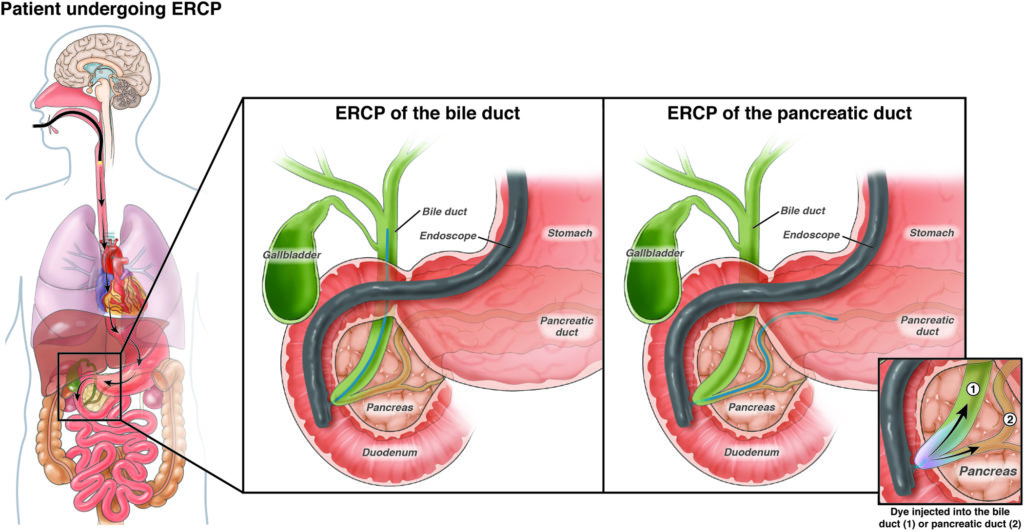Endoscopic retrograde cholangiopancreatography (ERCP)

Endoscopic retrograde cholangiopancreatography (ERCP) is a procedure that uses endoscopy, x-ray and dye to view the biliary tract and pancreatic ducts and possibly treat issues there.
Gastroesophageal reflux disease (GERD)

Gastroesophageal reflux disease (GERD), or just acid reflux, is when stomach acid frequently flows back into the esophagus. Heartburn is the most common symptom of GERD.
Eosinophilic esophagitis (EoE)

Eosinophilic esophagitis (EoE) is when white blood cells build up in the esophagus and may result in trouble swallowing, heartburn and reflux.
Gastroparesis

Gastroparesis or delayed gastric emptying is when the stomach has trouble clearing out its contents, possibly due to issues with the stomach muscles, nerves, or brain and spinal cord nerves.
Dyspepsia

Dyspepsia, or indigestion, may cause upper abdominal pain, burning or heat, and the stomach feeling full during or after eating.
Celiac disease

Celiac disease is when a person can’t eat gluten. Some symptoms are gas, stomach bloating and pain, diarrhea and constipation.
Barrett’s esophagus

Barrett’s esophagus is when the cells lining the esophagus — the tube connecting the mouth to the stomach — change into the cells lining the intestine. The test for Barrett’s is an endoscopy.
